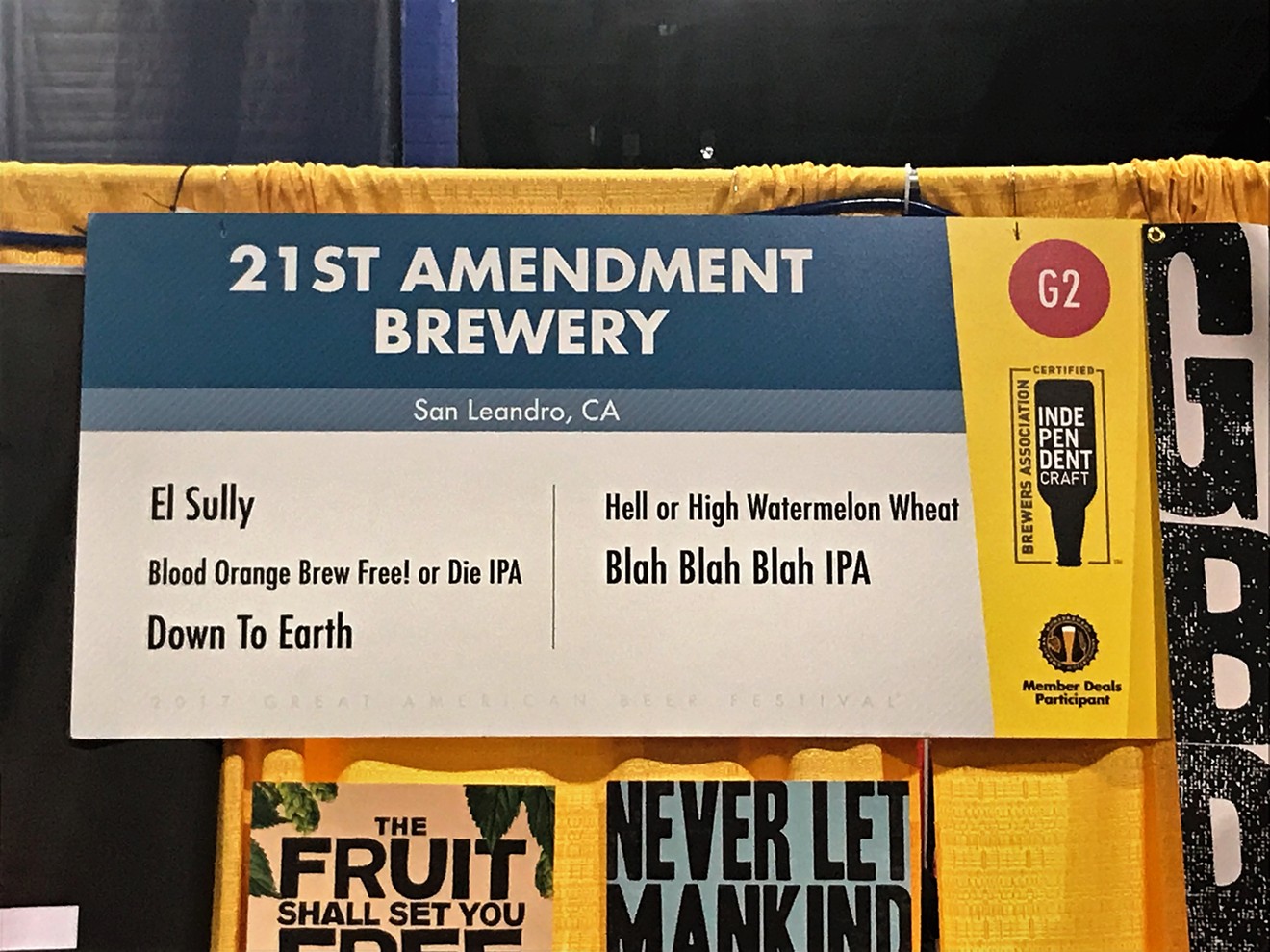Two years ago, Renegade Brewing founder Brian O’Connell posted a treatise on his website calling for an end to the use of the word “craft” to describe, well, craft beer. “The moniker of craft is now being used as a tool by the macro brewers to marginalize and set aside what we do,” he wrote. “Craft, in a way, implies that we are some little side project that will go away… Don’t call us a craft brewery. We are not craft beer! We are beer! My point being that making a quality product the way it is supposed to be made should not come with a qualifier.”
At the time, I didn’t understand his reasoning. After all, “craft” is what distinguished better beer. It is what helped set small breweries apart from the industrial producers and how consumers would be able to tell the difference. The Boulder-based Brewers Association, which represents craft breweries nationwide, had even gone so far as to define “craft” as a way to differentiate which companies could be a member of the trade group. (You can read the definition, which uses small, independent and traditional as its three pillars, on the BA website.)
But it turns out that O’Connell may have been right — though for different reasons.
Rather than using the word “craft” to marginalize the 5,000-plus independently owned U.S. breweries, the big beer companies — Anheuser Busch InBev, MillerCoors, Heineken and Constellation Brands, for example — have co-opted the term, using it to describe some of their own beers, in particular those made by the formerly independent craft breweries they have purchased. Those companies were making craft beer the day before they were purchased, the big brewers reason, so why wouldn’t they still be making craft beer the day after?
It’s a sudsy semantic standoff. And while the BA and its members have no plans to back away from the word “craft” (for confirmation on that, just take a look at the organization’s recently unveiled and kind of goofy Take Craft Back campaign), the organization has also focused on a different word more recently: independent.
In June, the Brewers Association unveiled a new symbol, the independent craft brewer seal, and a logo, an upside-down beer bottle, that craft breweries can use on their packaging in order to give beer lovers “an easy way to identify true small and independent craft brewers,” the BA says. That prompted a petulant video retort from AB InBev. But last month the BA doubled down, adding the Independent logo and seal to the booths of any brewery that wanted them at the Great American Beer Festival in Denver. The BA also hung a huge banner displaying the seal on the side of the Colorado Convention Center.
Although the campaign has been criticized for a variety of things — from the logo itself to the BA’s always heavy-handed approach — breweries are buying in. BA craft-beer program director Julia Herz reports that 2,400 breweries have signed the licensing agreement that allows them to use the logo. And those 2,400 breweries together produce 75 percent of the craft beer brewed in the United States.
While there are plenty of breweries that will reject it — “Craft brewers by nature can often be counter-corporate, counter-culture, so there are some who won’t come on board a collective effort,” Herz acknowledges — I think it was a smart move in the long run to use the word “independent” in addition to “craft.”
“Craft” can mean a lot of things. It’s abstract. It can be parsed and mocked and changed. The term has mixed messages in the marketplace, where some consumers — not to mention alcohol-industry analysts — use it to describe any full-flavored beer with a higher price point or alcohol content. And the Brewers Association has itself muddied the waters by twice broadening the definition of “craft” in order to include more companies, something that created an impression among some people that the definition was self-serving.
But “independent” conveys something different. It resonates, and it’s relateable. It’s a “brand” that most Americans identify with, what we celebrate on July 4. We all want to be independent, to make choices free of coercion. Budweiser may be America, but your local brewery is independent, has fought for its independence.
By focusing on that word, the BA has a much better chance of getting its message across to consumers about the differences between its members and the companies owned by big beer — and why the BA feels it should be important to those consumers to be able to tell the difference.
[
{
"name": "Air - MediumRectangle - Inline Content - Mobile Display Size",
"component": "12017618",
"insertPoint": "2",
"requiredCountToDisplay": "2"
},{
"name": "Editor Picks",
"component": "17242653",
"insertPoint": "4",
"requiredCountToDisplay": "1"
},{
"name": "Inline Links",
"component": "18838239",
"insertPoint": "8th",
"startingPoint": 8,
"requiredCountToDisplay": "7",
"maxInsertions": 25
},{
"name": "Air - MediumRectangle - Combo - Inline Content",
"component": "17261320",
"insertPoint": "8th",
"startingPoint": 8,
"requiredCountToDisplay": "7",
"maxInsertions": 25
},{
"name": "Inline Links",
"component": "18838239",
"insertPoint": "8th",
"startingPoint": 12,
"requiredCountToDisplay": "11",
"maxInsertions": 25
},{
"name": "Air - Leaderboard Tower - Combo - Inline Content",
"component": "17261321",
"insertPoint": "8th",
"startingPoint": 12,
"requiredCountToDisplay": "11",
"maxInsertions": 25
}
]














